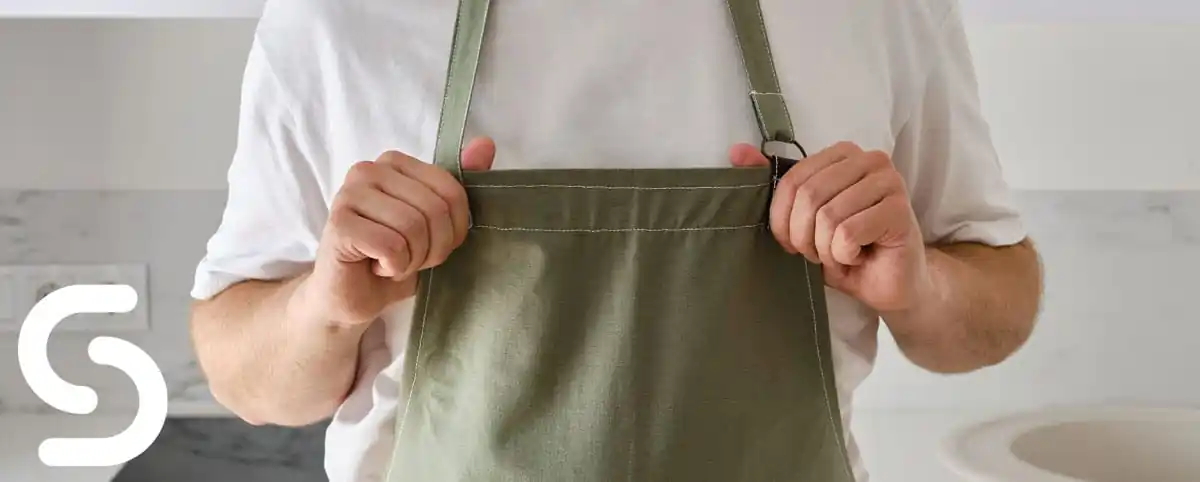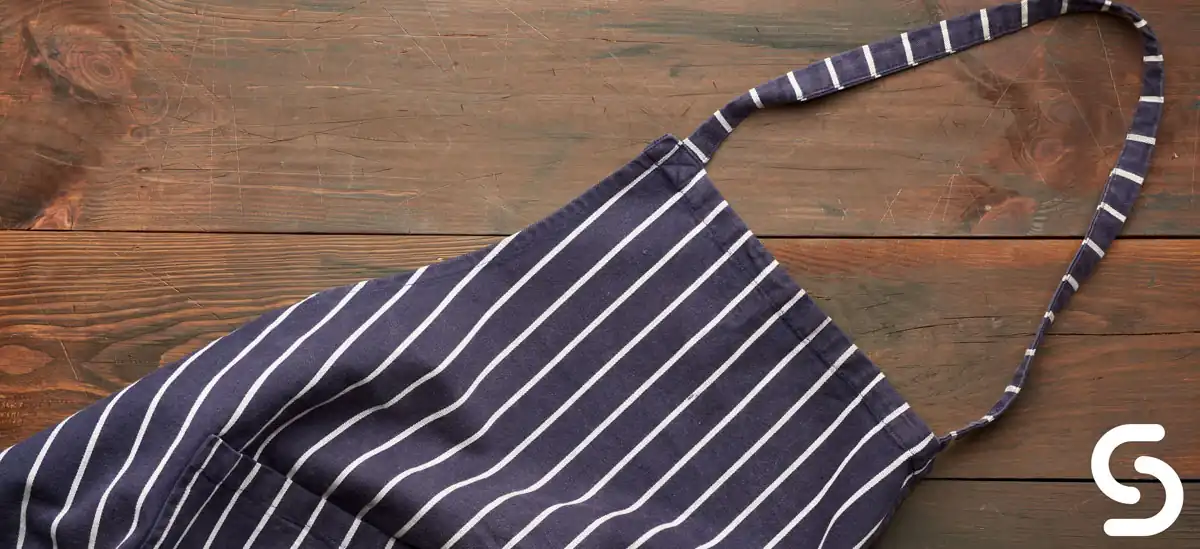How To Order Personalised Illuminated LED Menu Covers
Available in a range of sizes, our brand new illuminated menu covers are all the rage. Our illuminated LED menu
Available in a range of sizes, our brand new illuminated menu covers are all the rage. Our illuminated LED menu
Shop across our entire range of catering & hospitality products with up to 70% off until midnight Monday 1st December.
The leather menu cover can play a crucial role with customer’s first impressions. At Smart Hospitality Supplies, we have made
Your restaurant’s menu is more than just a list of dishes you offer – it’s your brand’s voice, your customer’s
As a chef, your apron is an essential tool that protects your clothing and reflects your professionalism and personal style in the kitchen. With numerous options, selecting the ideal chef apron can be daunting, so let’s go through all the ins and outs to help all your chefs.

When deciding on the best material for a chef’s apron, it’s all about finding the right balance between comfort, durability, and easy care.
First up, we have cotton. It’s a hit in bustling kitchens because it’s light as a feather and breathes like a champ. For chefs on their feet all day, cotton aprons offer a comfy fit that doesn’t bog them down. Plus, they have an ace up their sleeve: excellent absorbency. Any splashes or spills are quickly dealt with, keeping the chef and the kitchen clean. As a bonus, cotton aprons are a breeze to wash and maintain, so they’re as practical as they are comfy.
Next, there’s polyester. This is a go-to for chefs who are all about durability and a sleek, wrinkle-free look. Polyester aprons are built to take a beating. They can handle everyday use and numerous washes without losing their shape. On top of that, they’re easy to take care of, making them a solid choice for a hectic kitchen environment.
Polyester is a tough cookie when it comes to stains, making it a breeze to get rid of any food mishaps. Plus, most polyester aprons can take a spin in the washing machine, which is a time-saver for busy kitchen staff. And because they dry in a snap, these aprons can go from wash to wear in no time.
The only downside to polyester it’s breathability. Unlike natural fibres like cotton, polyester tends to hold onto heat and moisture. This can be a drag in a hot kitchen or during a rush-hour cooking frenzy. So, while polyester brings durability and easy care, it’s worth considering the breathability trade-off.
How about getting the best of both worlds? Aprons made of a cotton-polyester blend marry comfort with durability. They strike an outstanding balance, taking the top traits from both fabrics.

The length of your chef’s apron is essential to protect your clothing adequately. While choosing the size, consider the nature of your work and personal preference:
Waist-length aprons are designed to meet the needs of chefs and kitchen professionals who require a greater freedom of movement during their culinary tasks. As the name suggests, these aprons cover the area from the waist to the thighs or knees, leaving the upper body and arms unrestricted.
One of the advantages of waist-length aprons is their lightweight nature. These aprons are typically made from light cotton, polyester, or both fabrics. This lightweight construction ensures that the aprons do not weigh down the wearer or impede their movement.
Waist-length aprons offer easy access to pockets or tools. Chefs often need quick and convenient access to essential tools, such as kitchen utensils, thermometers, or notepads. Waist-length aprons usually feature pockets located within easy reach, allowing chefs to store and retrieve their tools efficiently. This accessibility saves time and enhances efficiency in a fast-paced kitchen environment.
The shorter length of waist-length aprons also contributes to their practicality. With a shorter hemline, these aprons are less likely to get in the way or become entangled with kitchen equipment, reducing the risk of accidents. The shorter length also allows for better airflow around the legs, minimising the buildup of heat and discomfort that can occur with longer aprons.
Bib-style or full-length aprons are the go-tos for chefs and kitchen workers who want the most protection possible. These aprons are like a shield, stretching from the neck or chest down to the knees or sometimes even the ankles.
What sets these aprons apart is how much of your body they cover. They act like a full-body guard against a busy kitchen’s spills, splashes, and stains. More coverage means more protection against heat, boiling liquids, and any other hazards that might pop up.
These aprons usually have adjustable neck and waist ties for a snug, secure fit. It’s a one-size-fits-all deal, ensuring anyone can comfortably wear the apron, whatever their size or shape.
And it’s not just about coverage; these aprons also come with a whole load of pockets or compartments. These give you plenty of room to stash your must-have tools, utensils, notepads, or any other essentials you need to keep at arm’s length. It’s all about keeping things organised and within reach, saving time and ramping up productivity.
The materials used for these aprons are tough as nails and easy to clean. You’ll often find them made from cotton, polyester, or both, which perfectly balance comfort, durability, and easy care.

Choosing an apron goes beyond practicality – style is also crucial. For chefs, their clothing is a means to express themselves, so finding an apron that meets their preferences and restaurant requirements and themes is essential.
Consider the material that suits your needs, the appropriate length for your work environment, pockets for storage, and adjustable features for a customised fit. An apron is a protective garment that reflects your kitchen personality and professionalism. By carefully selecting the ideal chef apron, you can enhance your overall culinary experience and make a lasting impression.
Lets take a look at the behind the scene of making chefs aprons



A Company Registered in England & Wales Company Registration Number: GB05069286 VAT Registration Number: GB867112521 Smart Hospitality Supplies is a trading division of The Smart Marketing & Media Group Limited
